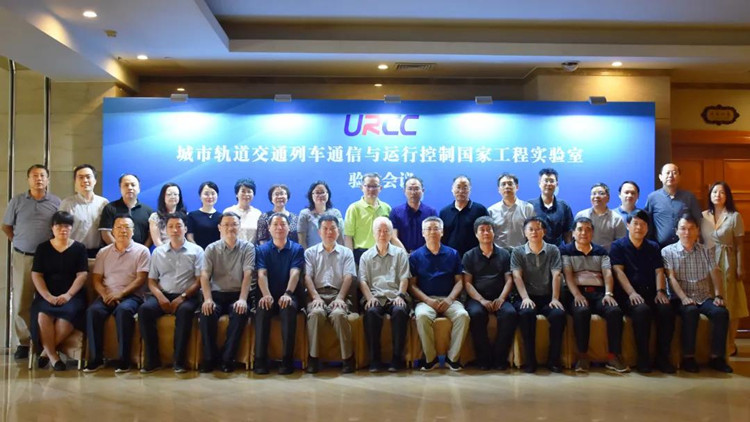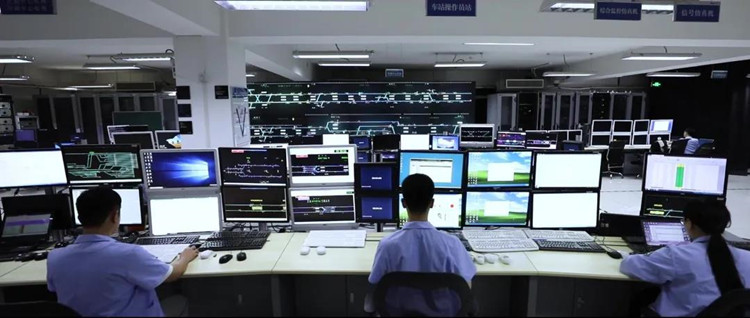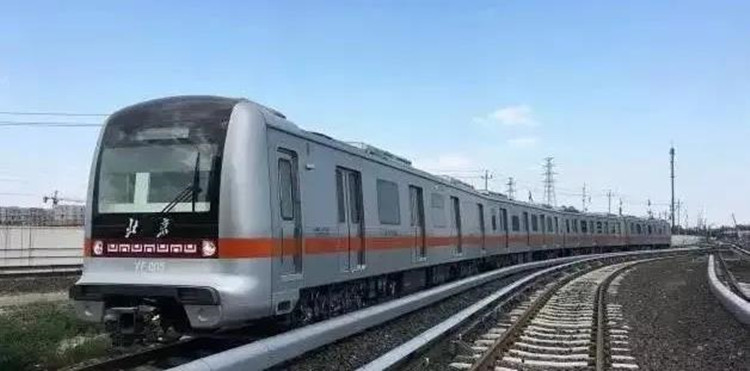On August 14, 2020, the project acceptance meeting for the National Engineering Laboratory for Urban Rail Transit Train Communication and Operation Control (hereinafter referred to as the “National Engineering Laboratory”) approved by the National Development and Reform Commission (NDRC) and led by Traffic Control Technology Co., Ltd. (“TCT”) was convened in Beijing. This meeting was presided over by the Beijing Municipal Commission of Development and Reform. Experts from Beijing, Guangzhou, Shenzhen and other cities were invited to form an expert team for joint participation in this acceptance.

On August 14, 2020, the project acceptance meeting for the National Engineering Laboratory for Urban Rail Transit Train Communication and Operation Control (hereinafter referred to as the “National Engineering Laboratory”) approved by the National Development and Reform Commission (NDRC) and led by Traffic Control Technology Co., Ltd. (“TCT”) was convened in Beijing.
All members of the expert team agreed that the National Engineering Laboratory focused on the strategic tasks and major technical difficulties facing the autonomous train control equipment for urban rail transit, made a breakthrough in six key technologies that constrain the independent innovation in urban rail train control, and built an inter-generational system for the train control system of China’s urban rail transit, which is leading, pioneering and exemplary. This project has reached various expected indicators and satisfied the acceptance requirements and conditions. So, it was agreed that the project passed the acceptance.
Collaborative innovation, fruitful results

Led by TCT, the National Engineering Laboratory adopts the “government-industry-university-researcher-user” collaborative innovation model. TCT builds it through cooperation with Beijing Jiaotong University, Beijing Rail Transit Construction Management Co., Ltd. and Beijing Subway Rolling Stock Equipment Co., Ltd. To solve the problems of CBTC system of urban rail transit in China such as low continuous improvement capacity in reliability, availability, maintainability and intelligence, four construction units gave full play to their advantages under the guidance of the national government and Beijing Municipal Commission of Development and Reform as well as the support of different units such as China Association of Metros, built the National Engineering Laboratory into an advanced technical research, development and innovation platform, upstream/downstream innovative subject test and verification service platform, scientific and technological achievements transformation and demonstration platform and talent innovation and cultivation platform in the field of rail transit train control and has made a series of achievements.
This lab is equipped with six platforms, namely full-life-cycle safety assurance design of the train control system, ATP/ATO research and development, ground-vehicle communication information transmission system research and development, research and development of integrated dispatching commanding equipment with vehicles as the core, integrated test verification for the minimum system, and big data-based operation, maintenance and training. An innovative path for the transformation of the full-life-cycle results in urban rail train control “fundamental research-technology development-test verification-demonstration application” has been created.
With the support of the six platforms mentioned above, the National Engineering Laboratory adopts an internationally universal independent third-party safety certification management system. It has made a breakthrough in six key technologies that constrain the independent innovation of urban rail train control innovation, including safety design guarantee, ATP/ATO safety protection and autonomous driving, highly reliable and transparent ground-vehicle communication, integrated vehicle scheduling, the intelligent maintenance based on big data, and the immersive and interactive training based on scenarios. Also, it has developed three key systems including technologically leading intensive CBTC, interconnected CBTC and autonomous operation, and built an inter-generational train control system oriented for China’s urban rail transit.
Concurrently with the implementation of technological innovation and achievements in this project, the lab has also led in the formulation of 61 standards and specifications on urban rail transit CBTC interconnection and automatic operation system, obtained 70 authorized patents of invention, and eight awards (including one national award). It has also set up an innovation team in key areas of urban rail transit to ensure a steady flow of talents for the innovative development of China’s rail transit.
Demonstration application, huge benefits

While making a series of research achievements, the National Engineering Laboratory has also combined its achievements with the market and implemented their applications. The CBTC technology reduces resources and lowers the traction energy consumption of trains. Currently, the technology has been applied in projects on more than 50 routes. In terms of interconnection technology, the lab has, for the first time, overcome the global difficulty in the interconnection system, and complied and finalized a series of interconnection system standards with completely independent intellectual property rights, which fills the gap of China in this field and forms a CBTC interconnection industry of Chinese standard. The interconnection technology has been successfully applied in Chongqing’s national interconnection demonstration project, and been promoted in 26 cities nationwide. In term of autonomous operation technology, the lab has created an automatic operation technology system based on China’s operation scenarios for the first time; developed the FAO system of Chinese version; and succeeded for the first time in applying this technology in the national independent innovation demonstration project for the autonomous operation system of Beijing Subway Yanfang Line, becoming a benchmark for the autonomous operation line construction in China.
The National Engineering Laboratory represents an important base for knowledge innovation, technology research, test development, industrialization, platformization and standardization of modern urban rail transit in China. It leads the development of the country’s urban rail transit communication signals. The lab has produced significant social and economic benefits.
In terms of economic benefits, the lab can effectively optimize energy conservation, increase passenger flow, and greatly reduce equipment, labor and operating costs. The intensive CBTC system can save 12.02% of the energy for a single train than the existing operating curve. The interconnection system reduces transfers and waiting time through cross-line operation, and is expected to increase the passenger flow along the line by about 8 to 10%. Also, different operation organization methods and passenger flow analysis are used to reduce vehicle configurations and save equipment costs. Through the autonomous operation, the FAO system effectively saves labor and operating costs.
In terms of social benefits, the lab has explored and established a “full-life-cycle technological innovation and achievement transformation” model, becoming an industrial think tank serving both enterprises and the government. As the brain for controlling rail transit vehicles, Signal drives the development of the entire rail transit industry with its independent innovation demonstration effect. All these have improved the overall technology level of the industrial chain and enhanced the core competitiveness of rail transit equipment.
Persistent innovation, smart development

With the rise in urban population and travel needs, even higher requirements are increasingly proposed to develop urban rail transit. Greater safety, higher efficiency, lower costs, and ease of maintenance are eternal topics. Nowadays, the urban rail transit industry consists of many disciplines that still need to be introduced from abroad. Upon its completion, the National Engineering Laboratory will continue to make explorations and march ahead on the path to independent innovation and undertake the task of making the innovation technology shift from the budding stage to mature application and then to creation. The lab will become an important source of independent innovation of industrial technology and a supporting platform for increasing the innovation capabilities of enterprises.
In the future, the lab will focus on the major strategic needs of the modern rail transit system proposed in the national strategy titled Outline for Building a Powerful Transportation Country and the Outline for the Development of Smart Urban Rail Transit in China issued by the China Association of Metros (CAMET) and follows the technical route featuring independent innovation. Revolving around digitalization, intelligence and networking, it will integrate the achievements of the new technological revolution and urban rail transit and make a further breakthrough in key technologies of urban rail transit. On the one hand, the lab will further integrate emerging information technologies such as cloud computing, data, IoT, AI, 5G, satellite communications, blockchain, and urban rail transit services. On the other hand, it will emphasize automation, enhance the ability of independent technological innovation, and establish the Chinese brands with independent intellectual property rights and competition strength in the market and a safe and controllable technical system and industrial chain. Through continuous intelligent and autonomous construction and the construction of “smart subways”, it will transit urban rail transit from high-speed to high-quality development, get the transit integrated into the “smart city” system, and a greater push for the building of a powerful transportation country.



